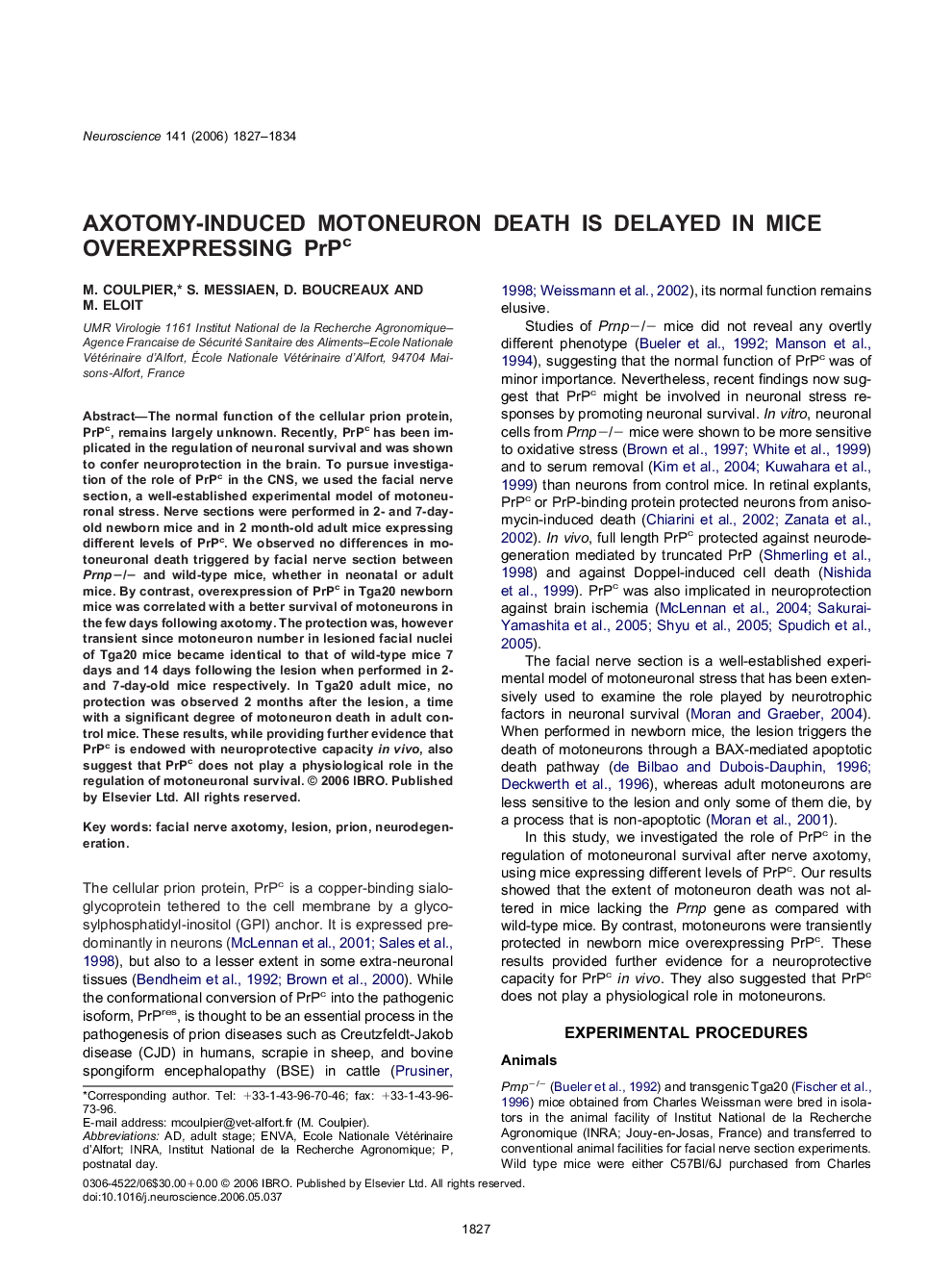| Article ID | Journal | Published Year | Pages | File Type |
|---|---|---|---|---|
| 4342095 | Neuroscience | 2006 | 8 Pages |
Abstract
The normal function of the cellular prion protein, PrPc, remains largely unknown. Recently, PrPc has been implicated in the regulation of neuronal survival and was shown to confer neuroprotection in the brain. To pursue investigation of the role of PrPc in the CNS, we used the facial nerve section, a well-established experimental model of motoneuronal stress. Nerve sections were performed in 2- and 7-day-old newborn mice and in 2 month-old adult mice expressing different levels of PrPc. We observed no differences in motoneuronal death triggered by facial nerve section between Prnpâ/â and wild-type mice, whether in neonatal or adult mice. By contrast, overexpression of PrPc in Tga20 newborn mice was correlated with a better survival of motoneurons in the few days following axotomy. The protection was, however transient since motoneuron number in lesioned facial nuclei of Tga20 mice became identical to that of wild-type mice 7 days and 14 days following the lesion when performed in 2- and 7-day-old mice respectively. In Tga20 adult mice, no protection was observed 2 months after the lesion, a time with a significant degree of motoneuron death in adult control mice. These results, while providing further evidence that PrPc is endowed with neuroprotective capacity in vivo, also suggest that PrPc does not play a physiological role in the regulation of motoneuronal survival.
Related Topics
Life Sciences
Neuroscience
Neuroscience (General)
Authors
M. Coulpier, S. Messiaen, D. Boucreaux, M. Eloit,
